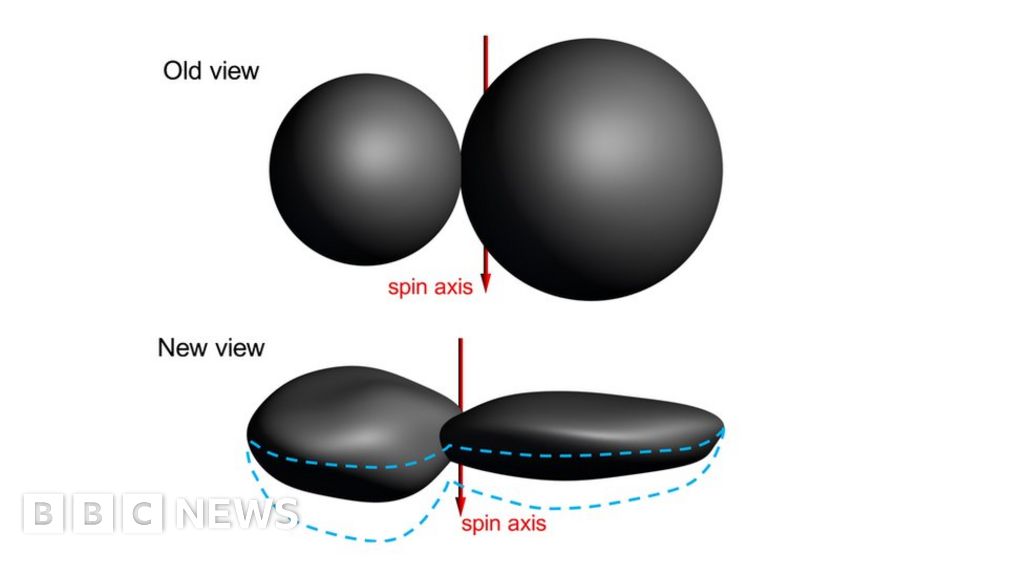
It seems the "space snowman" is more like a "gingerbread man".
Scientists studying the distant object known as Ultima Thule are revising ideas about its shape after examining the latest images downlinked to Earth.
The pictures, taken by the New Horizons probe on 1 January, show the apparently bulbous body to be quite flat.
This interpretation is evident from the data acquired by the Nasa spacecraft when it looked back at icy Ultima Thule as it zoomed past at 50,000km/h.
The small world appears dark apart from a crescent of sunlight along its limb. But scientists can tell from the way background stars blink on and off where its edges are.
Rather than being two relatively spherical bodies in contact with each other, Ultima Thule in this new analysis is determined to be much more squashed.
It's not the snowman lookalike we all first imagined.
The New Horizons science team now says the larger lobe, nicknamed "Ultima", more closely resembles a giant pancake; and the smaller lobe, nicknamed "Thule", is shaped like a dented walnut.
"We had an impression of Ultima Thule based on the limited number of images returned in the days around the flyby, but seeing more data has significantly changed our view," explains principal investigator Prof Alan Stern.
"It would be closer to reality to say Ultima Thule's shape is flatter, like a pancake. But more importantly, the new images are creating scientific puzzles about how such an object could even be formed. We've never seen something like this orbiting the Sun."
New Horizons' flyby of Ultima Thule occurred some 6.5 billion km from Earth. The encounter set a new record for the most distant ever visit to a Solar System object by a spacecraft.
The rendezvous occurred in a frozen region known as the Kuiper belt. The hope is that Ultima Thule's structure and composition can reveal new insights on how all planetary bodies came into being just over 4.6 billion years ago.
The latest pictures were taken when New Horizons was about 8,000km from the object.
Plenty more images will be released in due course - but only slowly.
The small size of New Horizons' radio antenna, combined with its low power output and distance from Earth, mean data transmission rates are glacial.
Twenty months have been set aside to downlink all the pictures and other observational data gathered in the few hours around the moment of closest approach on 1 January.
Jonathan.Amos-INTERNET@bbc.co.uk and follow me on Twitter: @BBCAmos
https://www.bbc.com/news/science-environment-47187733Bagikan Berita Ini















0 Response to "Nasa's New Horizons: 'Space snowman' appears squashed - BBC News"
Post a Comment